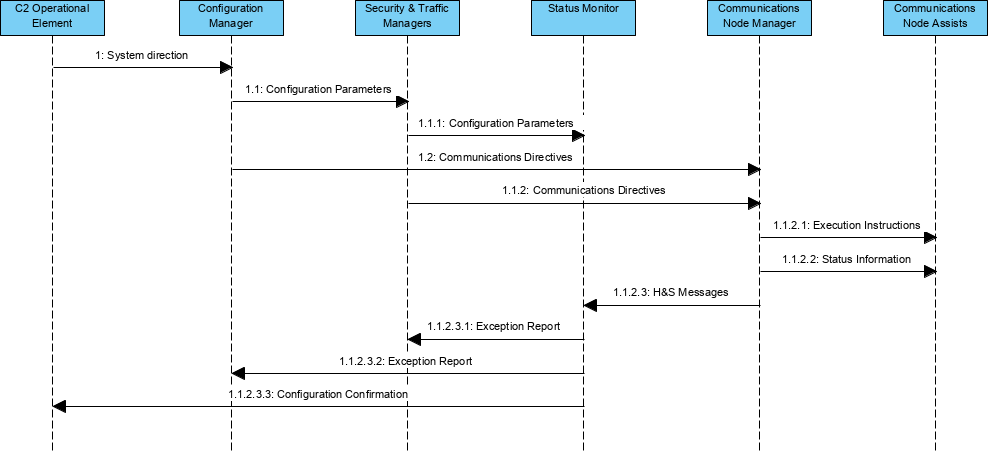The OV-6c provides a time-ordered examination of the Resource Flows as a result of a particular scenario. Each event-trace diagram should have an accompanying description that defines a particular scenario or situation.
Usage
The intended usage of the OV-6c includes:
- Analysis of operational events.
- Behavioral analysis.
- Identification of non-functional user requirements.
- Operational test scenarios.
Product Description
The OV-6c enables the tracing of actions in a scenario or critical sequence of events. OV-6c can be used by itself or in conjunction with OV-6b State Transition Description to describe the dynamic behavior of business activities or a mission/operational thread.
UML sequence diagram is used to model OV-6c. The items across the top of the diagram are node instances. Each node has a vertical timeline associated with it. Specific points in time can be labelled running down the left-hand side of the diagram. Directed lines between the node timelines represent interactions (e.g. information exchanges) between nodes and the points at which they intersect the timelines represent the times at which the nodes become aware of the events.
Creating an Event-Trace Description (diagram)
To create an Event-Trace Description diagram:
- Click on Event-Trace Description in the Action Artifact area, and then select Create New Diagram.
- Type the diagram name and press Enter.
- A blank diagram is created and you can start constructing the view.

DoDAF in Visual Paradigm
The DoDAF is brought to you by Visual Paradigm, a full-featured development platform. Visual Paradigm provides an easy-to-use, model-driven DoDAF tool that supports the development of DoDAF 2.02 views and models. You can create integrated DoDAF products and generate architectural documents that facilitate organizations to efficiently coordinate enterprise architecture initiatives.